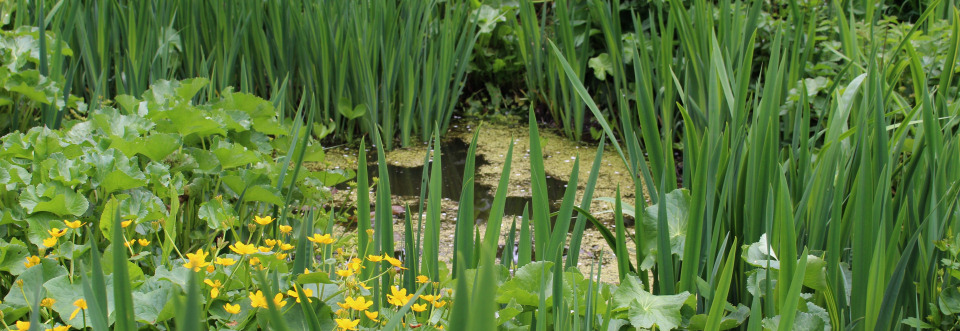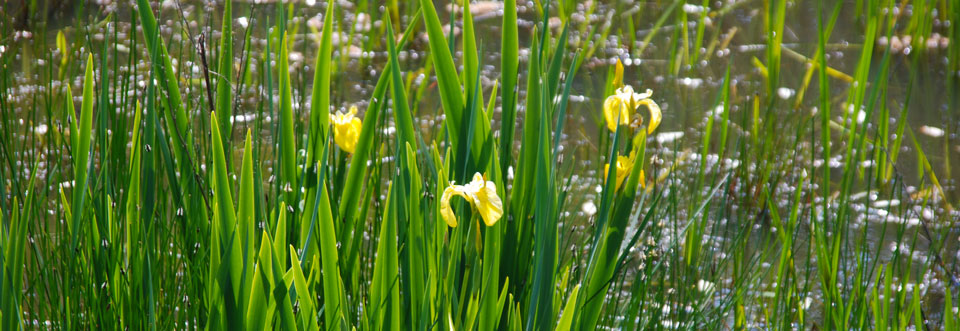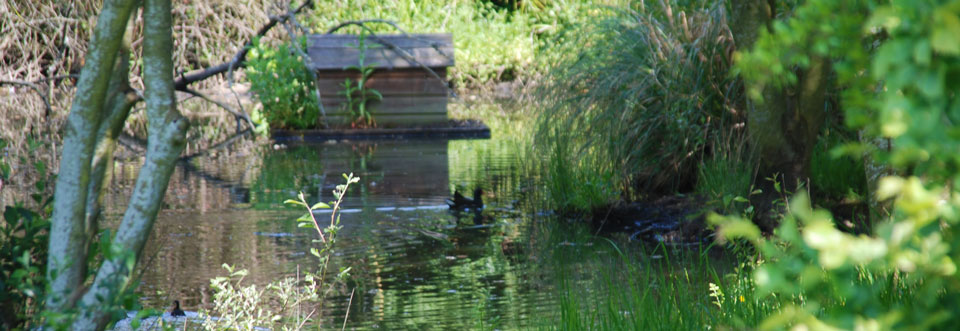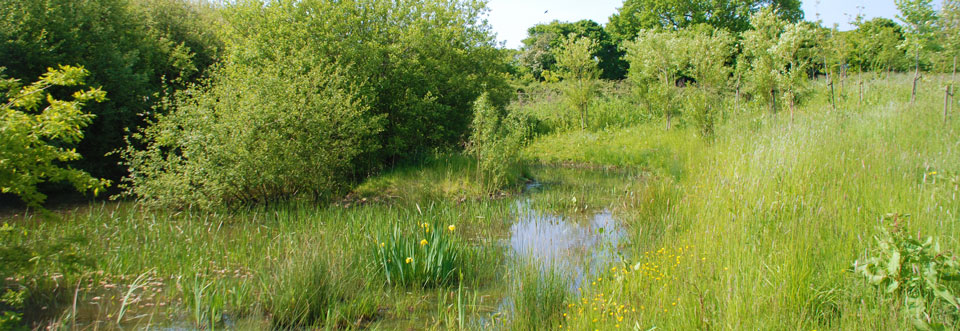

Home
About
Garden Design
Hard Landscaping
Soft Landscaping
Water Gardens
Garden Care Advice
Portfolio
Testimonials
FAQs
Articles
The Wildlife Pond
The trouble with having a wildlife pond is that I supposedly 'waste' a great deal of time watching it. It is the most fascinating habitat in the whole garden. I have had mine for about five years now and the first inhabitants, pond skaters, arrived within an hour of it filling up. Since then we have had Damsel flies, Dragon flies, Water Boatmen and lots of other unidentified little bugs that skitter and wriggle about in its depths. The icing on the cake came last week when my 8 year old (another essential ingredient for ponds by the way!) dipped his net in and found a newt. That's the thing about ponds, if you get it right you don't have to stock it, it stocks itself.So what makes a good wildlife pond? Firstly it must be deep enough in the middle for creatures to overwinter successfully, mine is about three feet deep with a shallower shelf around the edge. I used a butyl liner with the correct padding underneath, it pays to get this bit right as a hole in the liner is an expensive mistake to rectify. The edges have a gentle slope and because mine abuts the lawn I laid turf over the edge to hide the liner. I then did something that a lot of gardeners would hold their hands up in horror at, I chucked some clay soil (devoid of stones) into the bottom. Well, those newts have to have something to spuddle about in, don't they?
Be choosy about the plants you want to have in your pond. I chose native plants as far as possible, although I did succumb to a small, white waterlily . My favourites are Watermint, Brooklime and Water Forget-me-not. Avoid really rampant growers such as the yellow Iris, Bull rush and Canadian Pondweed in your pond as these will soon choke it. I made use of the wet clay soil behind my pond to plant yellow Iris as well as Purple Lythrum and Meadowsweet. I planted the pond lily in a pot but everything else I anchored under the turf edge or weighed them down in bunches on the shallow shelf to do their own thing.
You can get as artistic as you like with decorating the outer edges to attract residents and visitors. I chose a couple of semi-rotten large branches to drape over the back edge and dip right into the water and these have been a great hit with all types of birds as bathing and drinking perches. Insects love the flowering plants around the outside and in winter finches feast on the seed heads.
My pond is never going to be the tidiest and, yes, I do get some duckweed and blanketweed (a revelation in itself when you see what takes up residence in it) but it most certainly is one of the busiest.
And don't forget that essential item a Garden Seat!
By: 'Er Outdoors.








